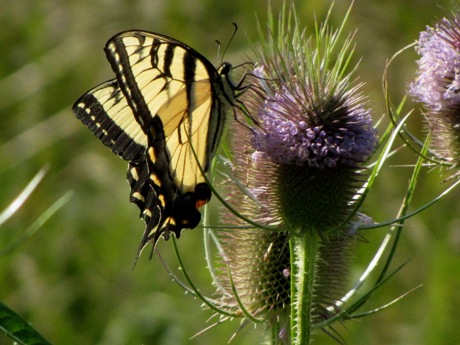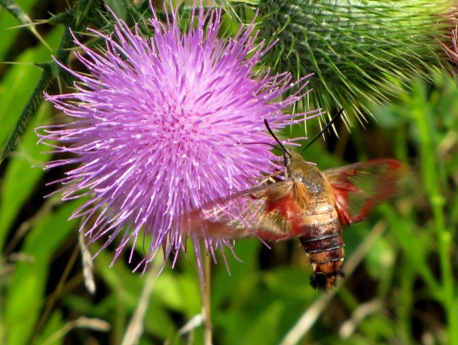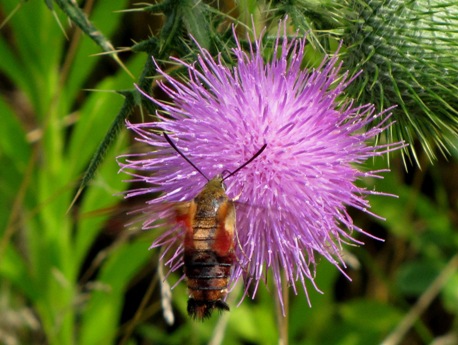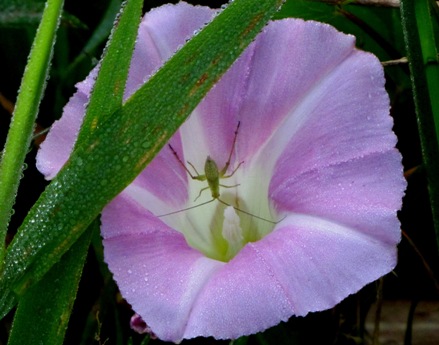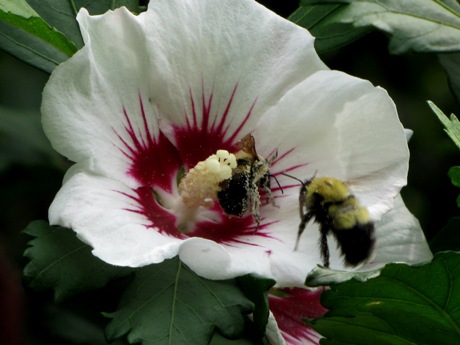Pics from Genesee County Park & Forest
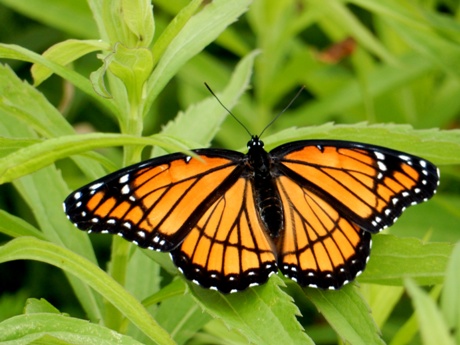
The Viceroy, pictured above, is nearly identical to the Monarch butterfly. Because the Viceroy so closely resembles the Monarch, which contain a toxin that is poisonous to birds and certain other predators, birds will thus avoid Viceroys...but only if it has previously sampled a Monarch -- otherwise it will readily make a meal of the Viceroy.

Donning her "summer reds," a doe casts a wary eye in my direction.
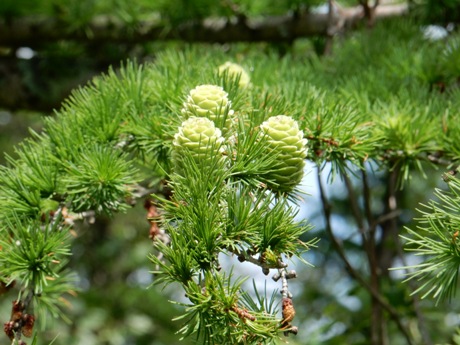
Early season larch cones.
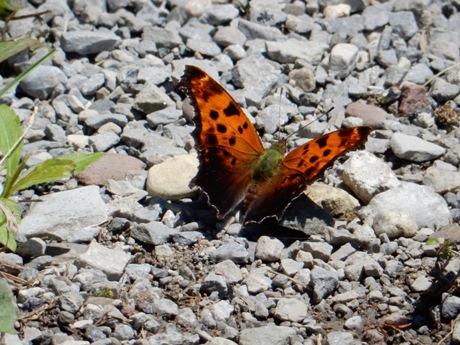
This butterfly is called a Question Mark -- honest! Taking nature photos is something Claudia and I enjoy. Identifying a species is satisfying in itself even if it leaves you wondering. I have no idea how the Question Mark got its name.
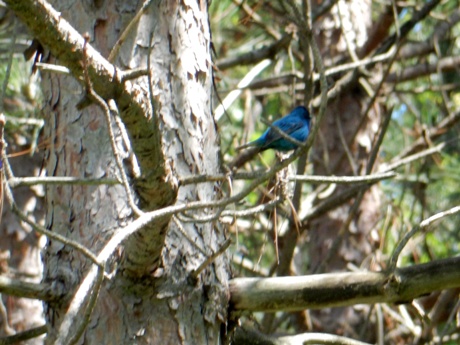
An Indigo bunting perched in the pines.
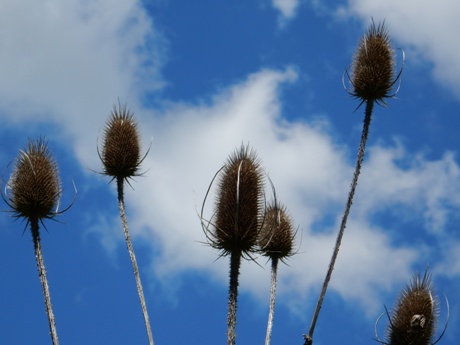
The remains of last year's teasel.

